| Article ID | Journal | Published Year | Pages | File Type |
|---|---|---|---|---|
| 1739911 | Nuclear Engineering and Technology | 2013 | 8 Pages |
This paper deals with the Safety Analysis for CANDU® 6 nuclear reactors as affected by main Heat Transport System (HTS) aging. Operational and aging related changes of the HTS throughout its lifetime may lead to restrictions in certain safety system settings and hence some restriction in performance under certain conditions. A step in confirming safe reactor operation is the tracking of relevant data and their corresponding interpretation by the use of appropriate thermalhydraulic analytic models. Safety analyses ranging from the assessment of safety limits associated with the prevention of intermittent fuel sheath dryout for a slow Loss of Regulation (LOR) analysis and fission gas release after a fuel failure are summarized. Specifically for fission gas release, the thermalhydraulic analysis for a fresh core and an 11 Effective Full Power Years (EFPY) aged core was summarized, leading to the most severe stagnation break sizes for the inlet feeder break and the channel failure time. Associated coolant conditions provide the input data for fuel analyses. Based on the thermalhydraulic data, the fission product inventory under normal operating conditions may be calculated for both fresh and aged cores, and the fission gas release may be evaluated during the transient. This analysis plays a major role in determining possible radiation doses to the public after postulated accidents have occurred.
